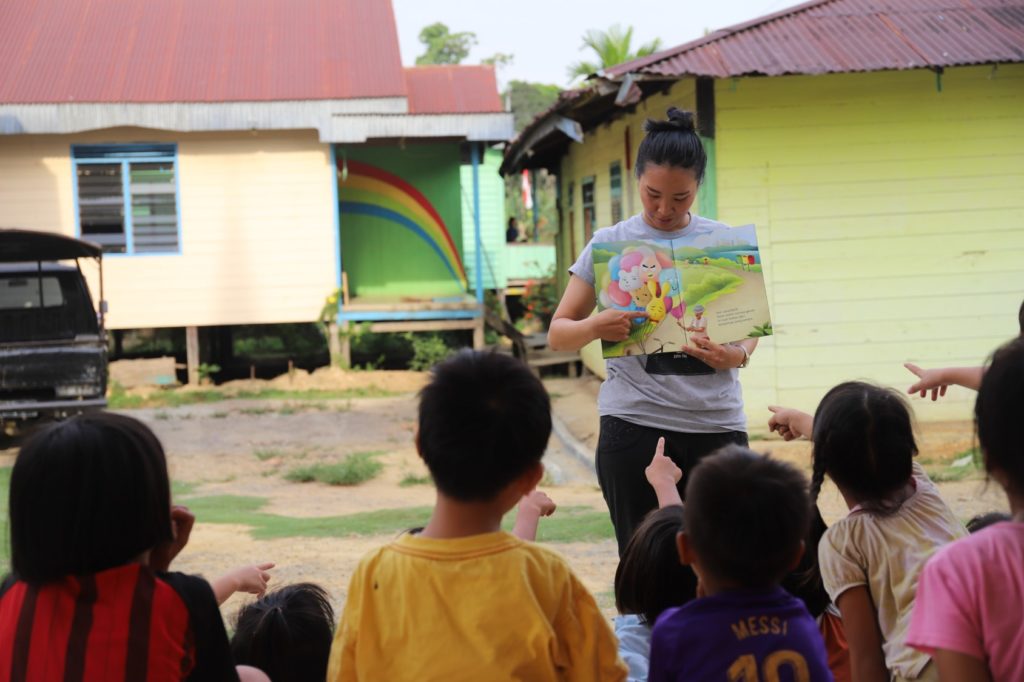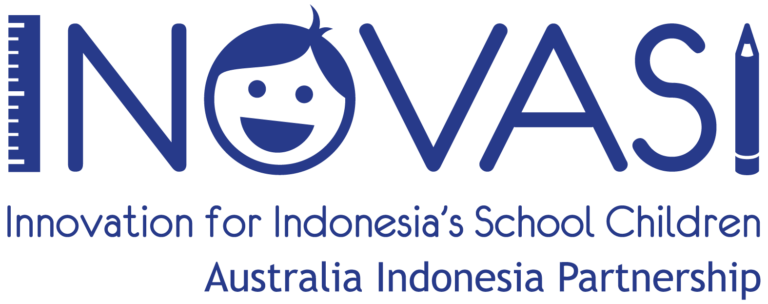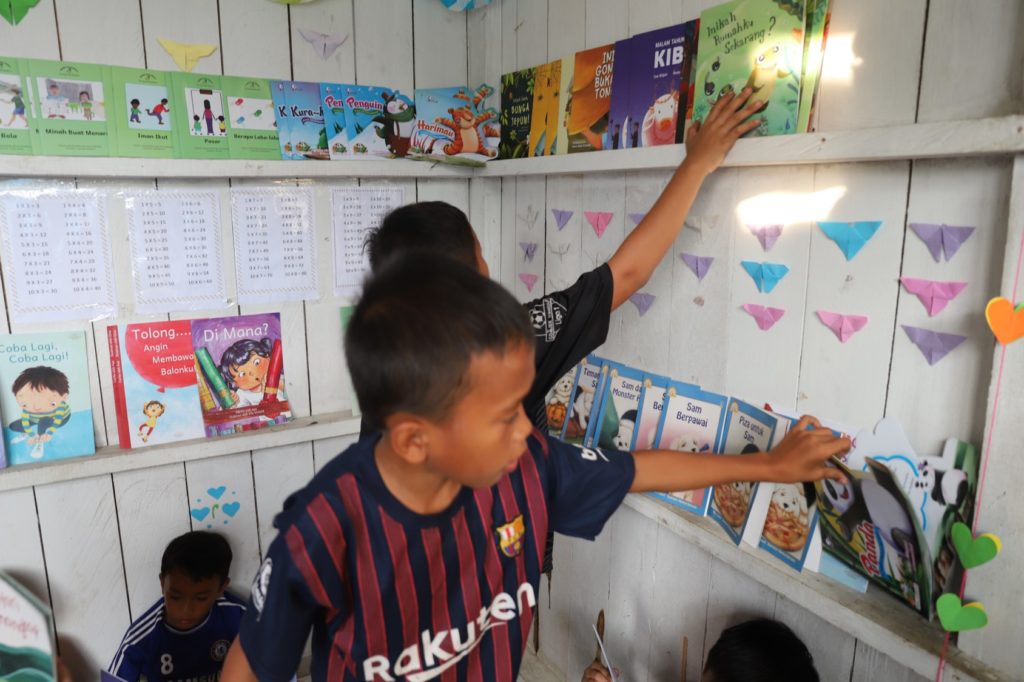
It’s four o’clock in the afternoon. The front yard of the GKII church in Taras Village looks deserted. There are no children in sight. They must still be at home or swimming in the river. We have made an agreement to read a book at the Ileh Taking Community Reading Park (Taman Bacaan Masyarakat, or TBM). In the Dayak language, Ileh Taking means rainbow.
In our village, the activists have two tricks to call the children to the TBM. The first trick takes place one day before the event. We make an announcement via WhatsApp group to the villagers and ask the parents to send their children to the TBM. Our second trick is that we use music. As soon as I turn on the loudspeaker and the song “Gemu Fa Mi Re” starts playing, the children come, one by one, to the church yard. In less than ten minutes, dozens of children will gather. This is how we start the reading activity in Taras Village.
The TBM is usually open twice a week for two hours in the afternoon. The activities at the TBM are not always about reading books. We start off by dancing together. The Dayak people love to dance, so we use dancing to attract the children’s attention.
After we have danced joyfully and with a happy heart, we continue our activities by reading a story. The children sit on the front steps of the church. Desy Astuthy, Nailly, and I take turns reading the story every week. Desy and Nailly are early childhood teachers in our village. I’m an honorary teacher at a junior high school. The three of us are TBM administrators.
The children love to have stories read to them. They have all kinds of questions. Sometimes they ask critical questions. We are always happy to answer their questions, and they always respond to our expressions with smiles and laughter. Reading stories is always fun.
I became an activist by accident. Initially, it was my mother who was proposed by the village to become an activist, but because she’s old, she could not take care of children anymore. That’s why I was asked to replace her. I had just graduated from Yogyakarta State University, and I accepted the offer as a way to serve the village.
As a new activist, I learned a lot about literacy. I also learned about children’s books. The Ileh Taking TBM received a story book grant from the Litara Foundation. These books have interesting pictures and contents. The children are happy because the stories are short, which makes them easy to read; the children don’t need to think too hard to understand the meaning of the stories. We hope that in the future there will be more books like this in our village because this will increase the children’s interest in reading.
In addition to exercising, dancing, reading stories from both digital libraries and storybooks, and reading books individually, we want to add one more activity, which is to help children to read. There are many children in the village who are not yet fluent in reading. When they come to the TBM, we teach them to read by reading stories to them. In the future, we want to help them in a more systematic way.
I praise God that the village head and the community support the activities at the TBM. By using the village budget, we were able to build a wooden hut that serves as a venue for the TBM.
The construction of the hut cost 7.8 million rupiah. In the future, we hope the village will support the TBM by procuring books and financing other activities. The children who come to the TBM are villagers themselves. For this reason, if the children excel in the future, the villagers will share a sense of pride.







